According to the European Federation of Psychology Students’ Associations (EFPSA), 90.9% of authors made three or more mistakes when formatting their references in APA style.
These aren’t content errors. These aren’t research problems.
These are formatting mistakes that kill grades on otherwise excellent work.
Most of these errors are completely preventable.
Students aren’t making mistakes because they don’t understand the material.
They’re failing because nobody taught them the formatting rules that professors expect them to know.
If you’re tired of losing points over technicalities instead of content, this blog will teach you everything about what is APA format and how to do APA format correctly.
Inside, you’ll discover what is APA style format actually is, its key components and structure, how to cite in APA format (with examples), the most common mistakes to avoid, and how it compares to other citation styles.
Key Takeaways
- What is the APA format? APA (American Psychological Association) format ensures consistent, credible, and plagiarism-free academic writing, especially in psychology and social sciences.
- It requires specific formatting for paper structure, in-text citations, and reference lists based on a 7th edition style guide.
- Main components include title page, abstract, main body, reference list, and (optional) appendices.
- Citations follow the author-date system both in-text and in the reference list.
- Formatting includes double-spacing, 1-inch margins, Times New Roman 12 pt font, and page numbers in the top right.
What Is APA Format?
APA stands for American Psychological Association, and it’s a style guide that tells you exactly how to write academic papers.
There are different types of formats in academic writing, and their purpose is to keep academic writing organized.
Without these standards, every paper would look different. And this difference would make it hard for readers to find what they need.
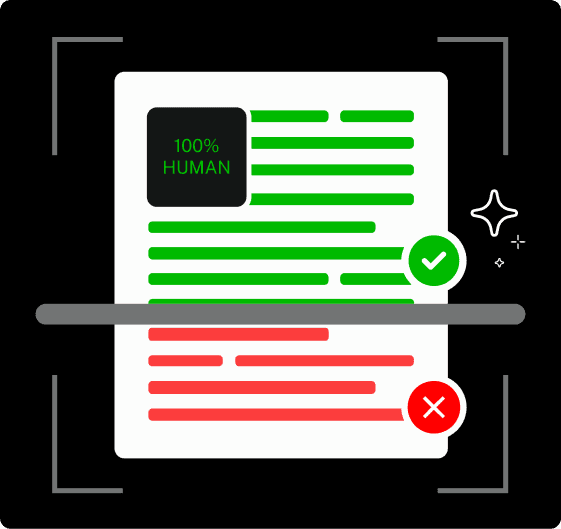
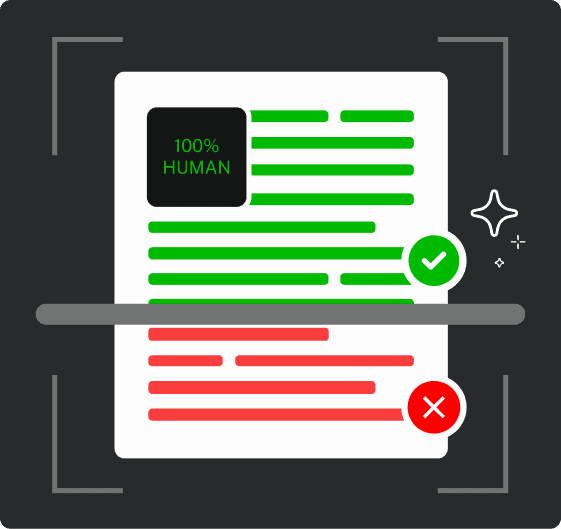
Never Worry About AI Detecting Your Texts Again. Undetectable AI Can Help You:
- Make your AI assisted writing appear human-like.
- Bypass all major AI detection tools with just one click.
- Use AI safely and confidently in school and work.
APA format has three main purposes:
- Creates consistency across all academic papers.
- Builds credibility by showing you’ve done real research.
- Prevents plagiarism by requiring you to give credit where it’s due.
The APA system has been around since 1929. The current 7th edition came out in 2020, updated for our digital world.
So, who uses the APA format?
This format is primarily used by papers of psychology, education, and social sciences.
APA’s signature feature is the author-date citation system.
Instead of footnotes, you put the author’s name and publication year directly in your text: (Smith, 2023).
This lets readers immediately see how current your sources are.
Let’s find out different components of what is APA format for a paper.
Components of APA Format
There are different components of an APA format. Let’s understand them one by one:
- Title
The title page is the first impression of the paper. This component includes a clear title, name, school, and the author note.
The page number starts here, which sits in the top right corner.
If your instructor requires a running head, it will be added in the header as well. Running head is a shortened version of your title.
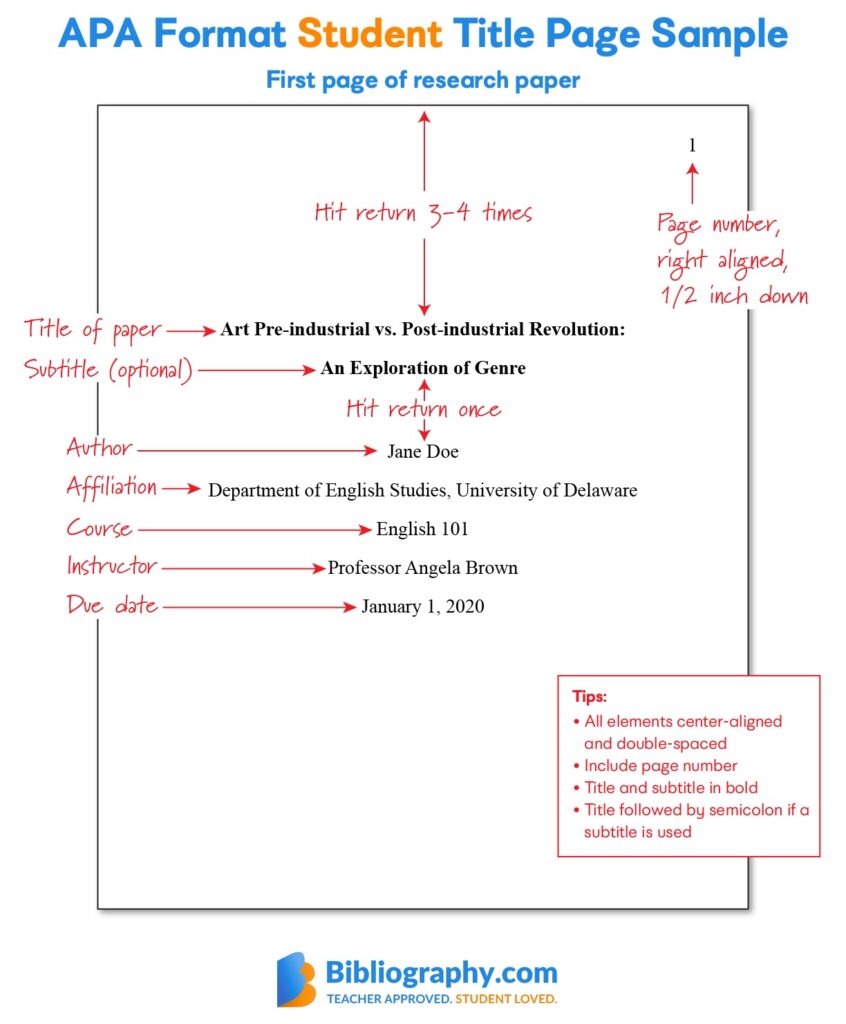
Source = Bibliography
2. Abstract
The abstract is your paper’s elevator pitch. In 150-250 words, you summarize your entire paper.
The abstract gets its own page and uses the same formatting as your main text.
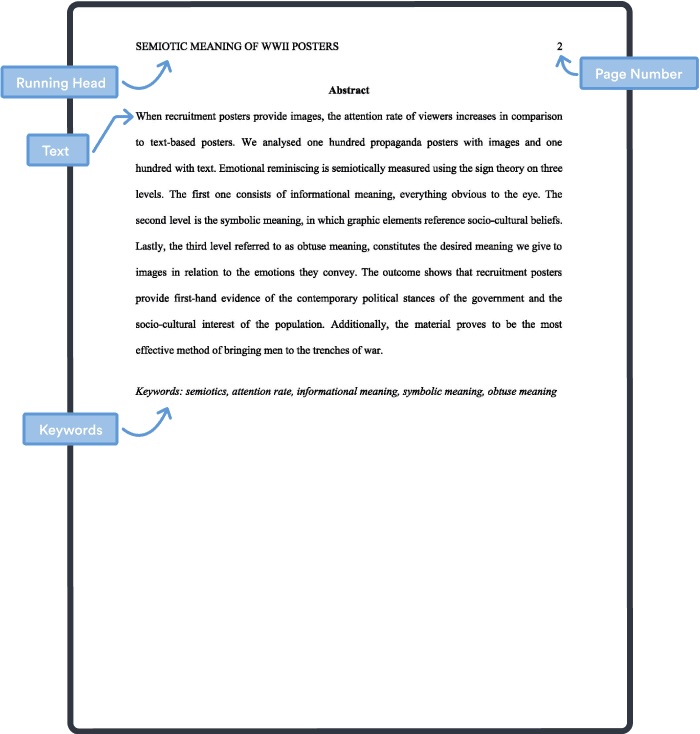
Source = Bibguru
3. Main Body
This is where your actual content lives. It contains your introduction, main arguments, analysis, and conclusion.
The main body follows specific formatting rules that make it easy to read and professional-looking. For example,
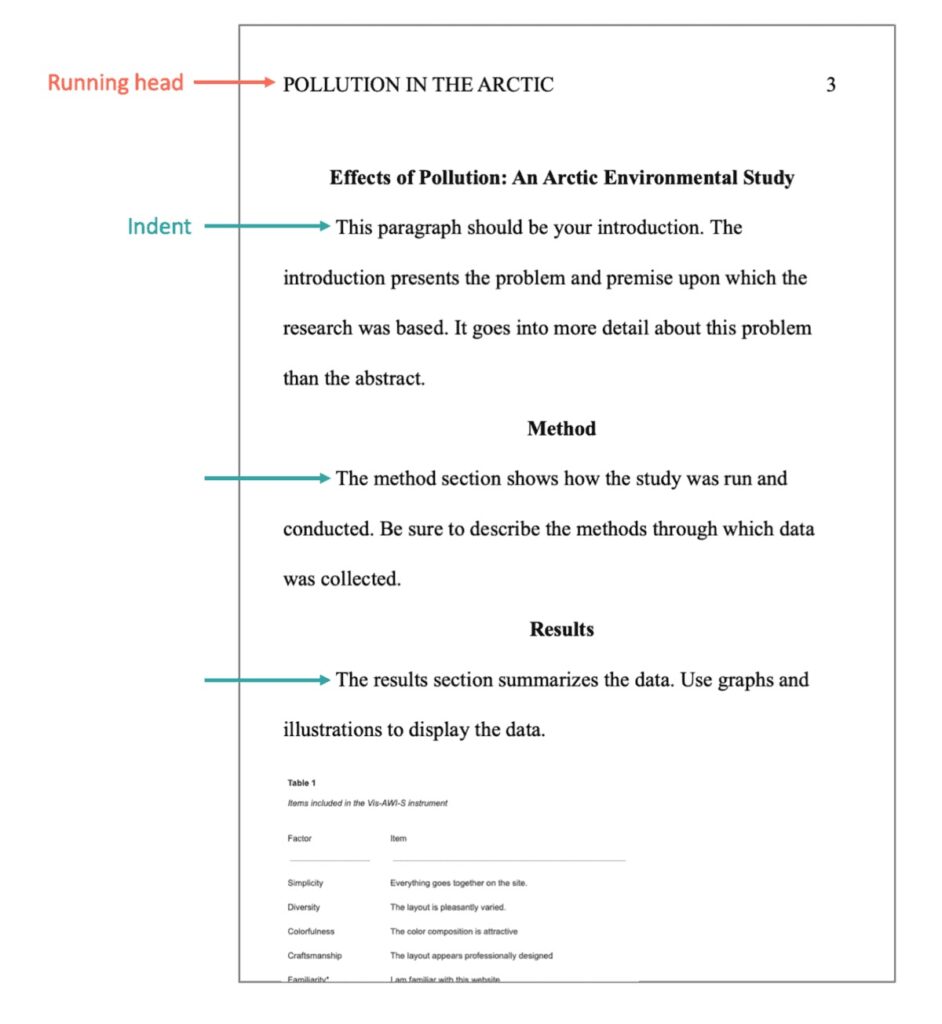
Source = Mindthegraph
4. Reference List
The sources where you have used in your paper gets referenced here. It’s alphabetical and follows strict formatting rules.
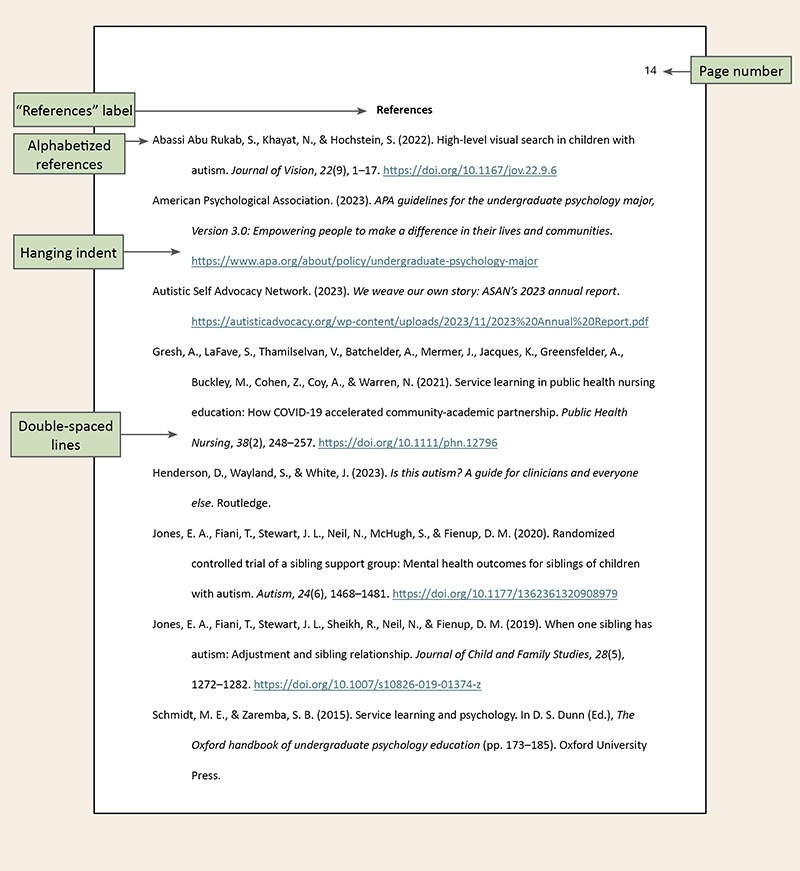
Source = Apastyle
5. Appendices (if needed)
This section includes the extra material that supports your paper but doesn’t fit in the main text. For example, things like surveys, long tables, or detailed charts go here.
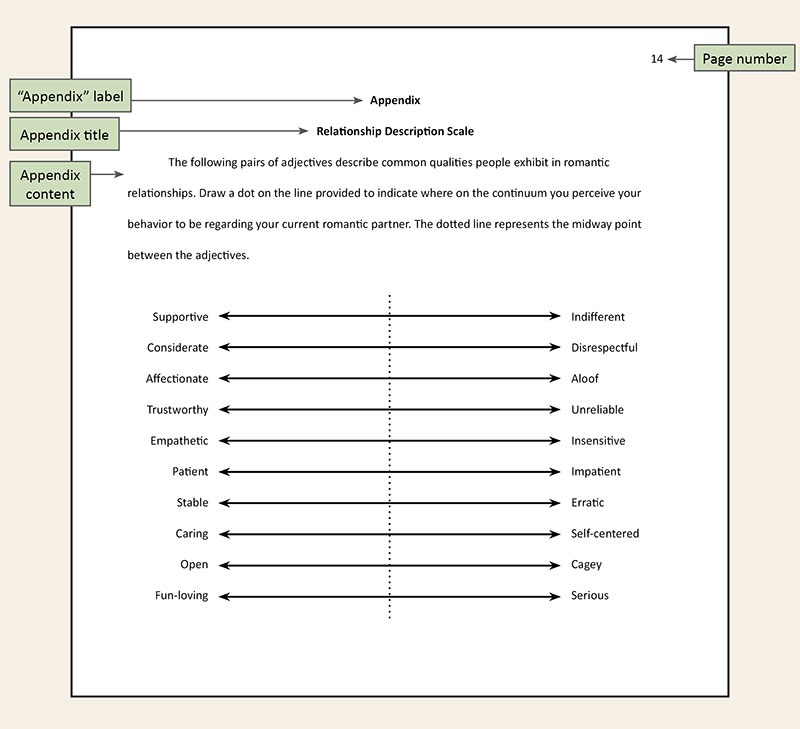
Source = Apastyle
Now let’s get into the specific rules for making each component look right.
Paper Formatting Requirements
Keep it clean and consistent. Here’s what your paper should look like:
- Font: 12-point Times New Roman
- Spacing: Double-space everything — from the title page to the references
- Margins: 1 inch on all sides
- Page Numbers: Top right corner of every page, starting from the title page
Heading Hierarchy (5 Levels)
APA gives you 5 levels to use — but most student papers stick to just the first two.
- Level 1 – Centered, Bold, Title Case
- Level 2 – Flush Left, Bold, Title Case
- Level 3 – Flush Left, Bold Italic, Title Case
- Level 4 – Indented, Bold, Title Case, Ending with a Period.
- Level 5 – Indented, Bold Italic, Title Case, Ending with a Period.
Example:
Level 1 – Methods
Level 2 – Data Collection
Level 3 – Survey Distribution
Level 4 – Participant Instructions.
Level 5 – Confidentiality Notice.
In-Text Citations
Every time you use someone else’s idea, cite it. Here’s how to cite in APA format:
- Paraphrasing: (Smith, 2023)
- Direct Quote: (Smith, 2023, p. 15)
- Author in Sentence: Smith (2023) explains that…
If there are two authors, use both names: (Taylor & Kim, 2020).
Three or more? Use first author + “et al.”: (Nguyen et al., 2021)
Reference List Rules
Understanding how to do APA format for your reference list is crucial:
- Alphabetize by the first author’s last name.
- Use hanging indents – first line at the margin, subsequent lines indented 0.5 inches.
- Follow specific capitalization rules: sentence case for article titles, title case for journal names. Example:
- Patel, L. (2020). Exploring emotional resilience in teens. Journal of Youth Studies, 45(2), 120–135.
Grammar and Syntax Guidelines
These fine-tuning rules elevate your paper from “done” to “professional.”
- Use “and” in the body of the sentence:
- Taylor and Kim (2020) suggest…
- Use “&” inside parentheses or citations:
- (Taylor & Kim, 2020)
- Always use the Oxford comma in lists:
- honesty, clarity, and consistency
- Prefer active voice over passive:
- Strong: “Researchers found a link…”
- Weak: “A link was found by researchers…”
- Tense Rules:
- Present tense for general facts: “Stress affects memory.”
- Past tense for specific studies: “Jones (2019) found…”
These details show you know the rules—and respect your reader’s time.
Reference List in APA Format
Reference list is where every source you’ve cited comes together — organized, clean, and consistent:
Basic Structure
- Alphabetize by first author’s last name
- Use hanging indents (0.5 inches for second and subsequent lines)
- Double-space all entries
- Start on a new page with “References” centered at the top
Essential Elements Every Reference Needs
- Author’s last name, followed by initials
- Publication year in parentheses
- Title using sentence case (capitalize first word, proper nouns, and first word after colon)
- Source information with proper italicization
Capitalization Rules
- Article titles: sentence case → “The effects of social media on learning”
- Journal names: title case and italicized → Journal of Educational Psychology
- Book titles: sentence case and italicized → Understanding human behavior
- Website names: title case, no italics → American Psychological Association
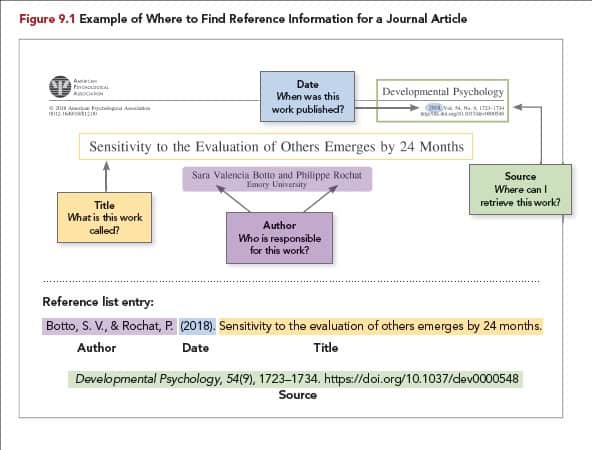
Source = apastyle
DOI and URL Guidelines
- Always include DOI when available: https://doi.org/10.1000/xyz123
- For URLs without DOI: Retrieved from https://www.example.com
- Only add retrieval dates for sources that change frequently
- Never use “Retrieved from” with DOIs
Missing Information Solutions
- No author: Start with title, move other elements up
- No date: Use (n.d.) where year would appear
- No page numbers: Use paragraph numbers (para. 4) or section headings
- Multiple works by same author: Order chronologically, add letters for same year (2023a, 2023b)
AI Essay Writer can generate properly formatted references from your source information, catching details you might overlook.
After creating references, AI Humanizer helps polish entries for better readability while maintaining APA compliance.
These tools save time on formatting tasks, but understanding the rules yourself remains essential for catching errors and making judgment calls.
How to Cite in APA Format?
Learning how to cite in APA format follows a simple pattern once you understand the basics.
Step-by-Step Citation Process
Step 1: Identify what you’re using
Are you using someone else’s exact words? That’s a direct quote. Are you putting their ideas in your own words? That’s paraphrasing.
Are you summarizing their main points? That’s still paraphrasing.
Step 2: Gather the essential information
- Author’s last name
- Publication year
- Page number (for direct quotes)
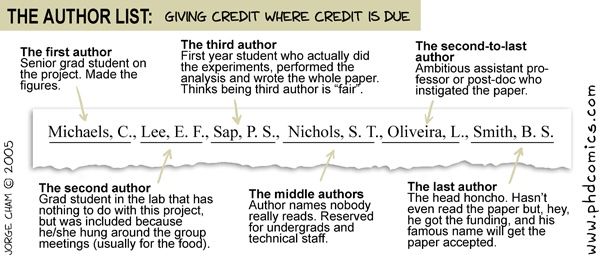
Source = Quora
Step 3: Choose your citation style
- Parenthetical: Put author and year in parentheses (Smith, 2023)
- Narrative: Use author’s name in your sentence, year in parentheses
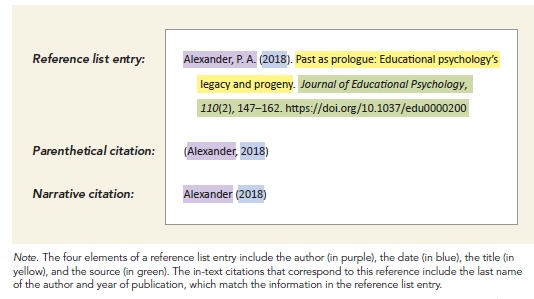
Source = apastyle
Step 4: Place the citation correctly
- Right after the borrowed information
- Before the period in most cases
- After the period for block quotes
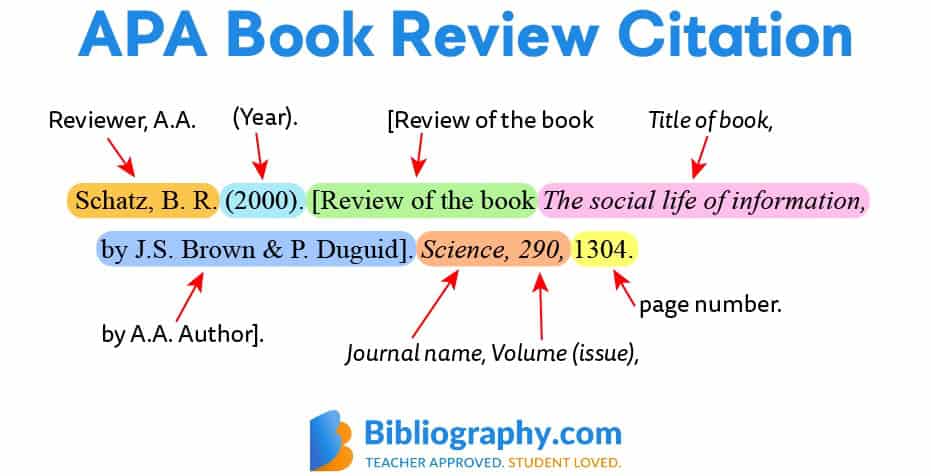
Step 5: Add the full source to your reference list
Every in-text citation needs a matching reference entry.
APA Format Examples
Now let’s see some what is APA format example for different source types and how to cite in APA format:
Book (single author): Smith, J. A. (2023). Understanding human behavior: A comprehensive guide. Academic Press.
Book (multiple authors): Johnson, M. B., Williams, S. C., & Davis, R. T. (2022). Research methods in psychology (3rd ed.). Pearson Education.
Journal article with DOI: Fraser, K. C., Dawkins, H., & Kiritchenko, S. (2025). Detecting AI-generated text: Factors influencing detectability with current methods. Journal of Artificial Intelligence Research, 82(1), 1–25. https://doi.org/10.1613/jair.1.16665
Journal article without DOI: Brown, L. M. (2022). Teaching strategies for diverse classrooms. Education Today, 28(4), 67-82.
Website with author: Mallett, G. (2025, October 23). What Are the Best AI Tools for Businesses in 2025? Tech.co. https://tech.co/ai/best-ai-tools-for-businesses
Website without author: AI in education: Best practices from classrooms worldwide. (2025, August 26). Forbes. https://www.forbes.com/sites/cathyrubin/2025/08/26/ai-in-education-best-practices—whats-working-in-classrooms-around-the-globe/?utm_source=chatgpt.com
Government report: U.S. Department of Education. (2023). Annual report on educational progress. Government Printing Office.
Newspaper article: Thompson, K. (2023, April 20). Students struggle with online learning. The Washington Post. https://www.washingtonpost.com/example
Basic paraphrase: Students who try to do multiple things during class learn significantly less than those who pay attention (Johnson, 2023).
Paraphrase with page number (optional but recommended): Multitasking during lectures reduces student comprehension by nearly a quarter (Johnson, 2023, p. 45).
Short quote example: Research shows that “students who multitask during lectures retain 23% less information than focused students” (Johnson, 2023, p. 45).
Quote with signal phrase: According to Johnson (2023), “students who multitask during lectures retain 23% less information than focused students” (p. 45).
If you need examples for specific source types like websites, government reports, or social media posts, AI Chat can generate additional citation examples tailored to your exact needs.
Simply ask for examples of the specific sources you’re working with, and you’ll get properly formatted citations you can adapt for your paper.
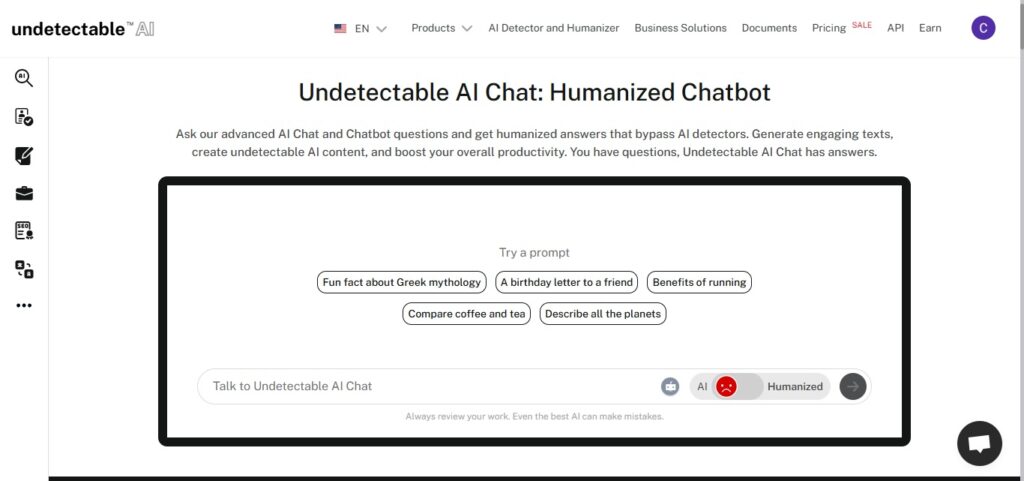
Writing in a strict APA format can sometimes feel robotic or unnatural.
AI Stealth Writer helps create human-like, naturally flowing APA-style content that maintains proper formatting while sounding authentic and undetectable by AI detection tools.
This is particularly useful when you want your academic writing to feel engaging and readable while still meeting all APA requirements.
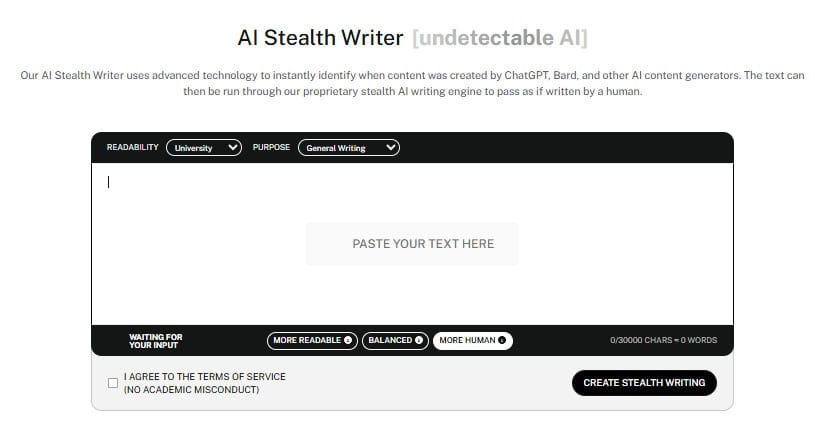
For in-depth information on the apa style, refer to this site.
Creating citations manually can be tedious and error-prone. Our Citation Generator takes care of the formatting for you—just enter your source and it instantly builds a clean, APA-compliant citation.
No guesswork, no stress—just polished references ready for your paper.
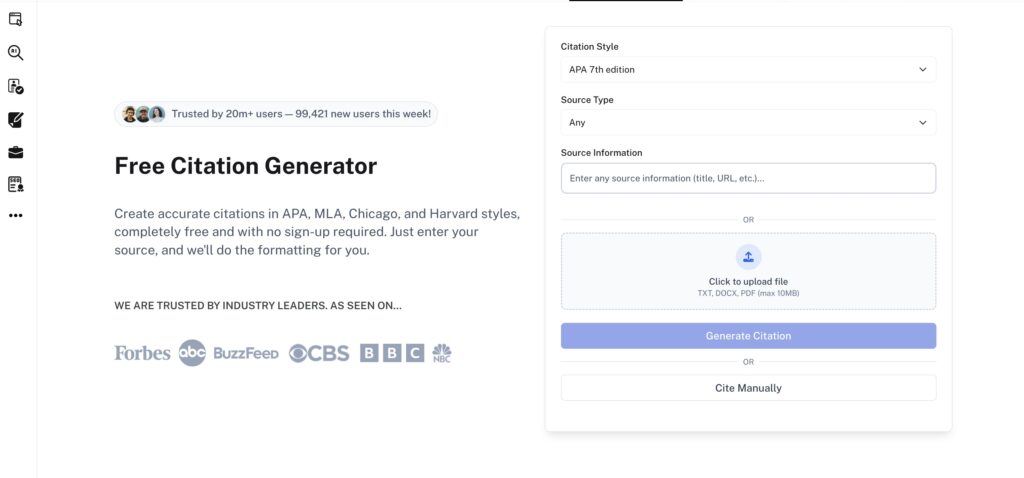
If you’d rather skip the stress of formatting citations by hand, our APA Citation Generator makes it effortless.
Just enter your source info—book, journal, website, anything—and it instantly creates a perfectly formatted APA citation you can drop straight into your paper.
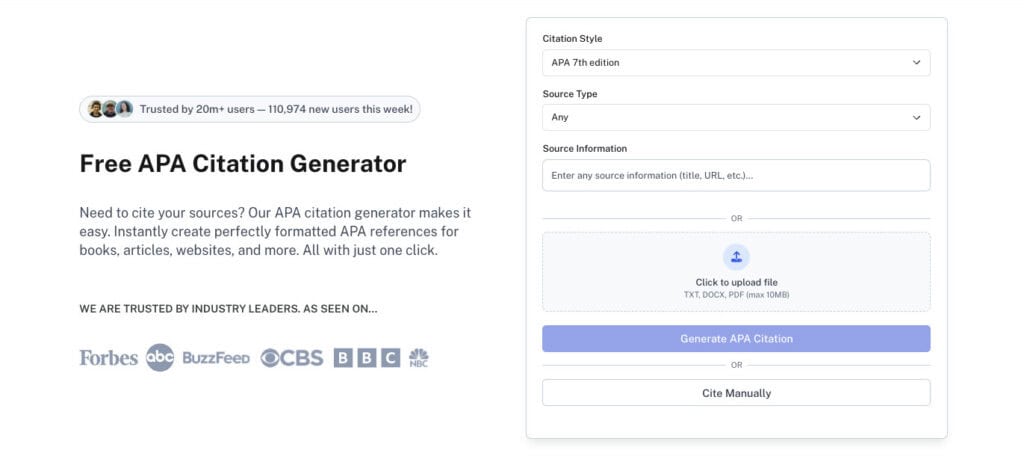
It’s fast, accurate, and saves you from second-guessing punctuation or indentation rules.
Common Mistakes to Avoid in APA Format
Here are the most frequent errors students make when learning how to do APA format:
- Incorrect use of “et al.”
Incorrect: Smith, Johnson, et al. (2020) said…
Correct: (Smith et al., 2020) — Use only the first author’s last name followed by et al. for sources with three or more authors, and only after the first full citation in-text.
- Improper capitalization in titles
Incorrect: The Psychology Of Learning
Correct: The psychology of learning — Article and book titles use sentence case: only the first word and proper nouns are capitalized.
- Missing page numbers in direct quotes
Incorrect: (Brown, 2019)
Correct: (Brown, 2019, p. 87) — Always include a page number when quoting directly from a source.
- Mixing up editions (6th vs. 7th)
Incorrect: Using “Retrieved from” before URLs or including access dates for stable sources.
Correct: APA 7th edition removes “Retrieved from” for most URLs and requires access dates only for non-permanent sources like wikis.
- Subject-verb agreement in paraphrasing
Incorrect: The results show that…
Correct: The results show that…
- Tense consistency
Incorrect: The author explains the study and found that…
Correct: The author explained the study and found that… — Use past tense for specific research or findings, present tense for general truths.
APA Format vs. Other Citation Styles
Understanding what is APA style format compared to other styles helps you choose the right one:
APA vs. MLA
APA puts emphasis on when the source was published (common in sciences). APA uses the author-date format: (Taylor, 2022).
- Example:
In-text: (Taylor, 2022)
Reference: Taylor, J. (2022). Cognitive development in early childhood. Academic Press.
MLA uses the author-page format: (Taylor 22). MLA cares more about where the information was found in the source (common in humanities).
- Example:
In-text: (Taylor 45)
Works Cited: Taylor, Jane. Cognitive Development in Early Childhood. Academic Press, 2022.
APA vs. Chicago
APA uses in-text citations in parentheses. APA keeps things brief.
- Example: (Lee, 2020, p. 23)
Chicago often uses footnotes or endnotes, especially in history or literature. Chicago gives room for more detailed source context in the notes.
- Example:
Text: “This theory is widely accepted.”¹
Footnote: ¹Sarah Lee, Social Structures and Their Impact (New York: Beacon Press, 2020), 23.
APA vs. Harvard
Both use author-date style, but Harvard’s formatting of references can differ: punctuation, order, and how URLs or DOIs are presented.
- Example:
Khan, R., 2021. Digital habits of Gen Z. TechWorld Publishing.
APA is stricter and more widely standardized across psychology and social sciences.
- Example:
Khan, R. (2021). Digital habits of Gen Z. TechWorld Publishing.
Access our trusted AI Detector and Humanizer using the widget below.
Conclusion
Now that you understand what APA format is and how to use APA format correctly, you’re already ahead of the curve.
Keep the basics in mind—Times New Roman, 12pt font, double-spacing, 1-inch margins, and accurate citations.
The examples and templates in this guide make it easy to format any source type with confidence.
With over 90% of students losing points on avoidable APA errors, you now have the tools to steer clear of those common pitfalls.
Practice makes it second nature. The more you apply these rules, the easier and more intuitive it gets.
Because in the end, mastering the details is just as important as mastering the research itself.
So—how will you make APA your strength, not your setback?
Need help polishing your APA-style writing?
Use Undetectable AI to humanize AI-generated content and ensure it meets academic standards—without raising red flags.
